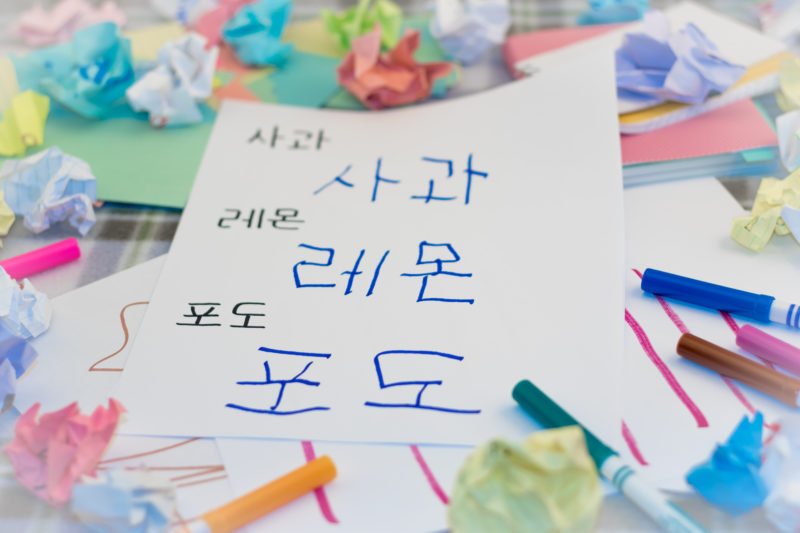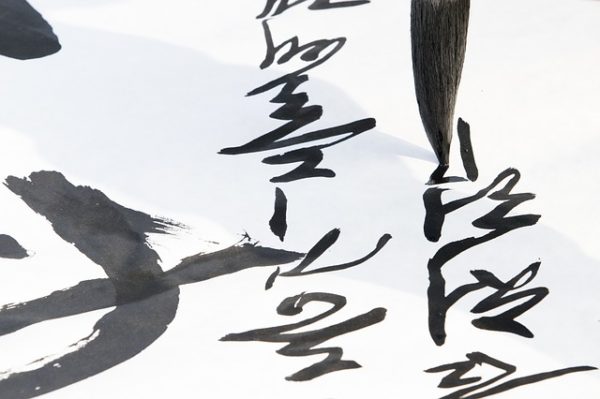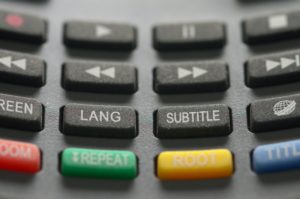Master the Korean Writing System
Korean is a beautiful language, but its writing system is shockingly different from English. Instead of Latin letters, Korean uses its own alphabet called Hangul. However impossible it may seem at first, you can actually learn the Hangul alphabet quickly.
Hangul is considered to be one of the most logical writing systems in the world. It accurately matches the sounds of the Korean language. Consonants represent the shape of the mouth as you’re pronouncing it. And vowels are horizontal or vertical lines. Although it may seem intimidating, learning the Korean alphabet is not a complicated process. It’s the first step every learner needs to take to master the language (or any language).
History of the Korean Alphabet
Before the invention of Hangul, there was no form of Korean writing. Using Chinese characters mixed with Korean sounds was the only way for people to write. However, that was very a complicated process. And only the wealthy few could learn how to do it. This meant that most Koreans were illiterate.
King Sejong, who ruled Korea at the time, wanted to unify the language and make writing accessible to all. In 1446 he created a writing system that matched the sounds of Korean. And thus Hangul was born. The word Hangul means “great script” or “Korean script”. This writing system is used in both North and South Korea, but its name in North Korea is chosongul.
There are 24 letters in the Hangul alphabet: 14 consonants and 10 vowels. Unlike English, where you write from left to write, in Korean, you stack the letters to create syllables. Each square block creates each syllable. And when you put several of these small blocks of sounds together, you create the words.

Korean Consonants
Here are the names of Hangul Consonants and how to pronounce them:
ㄱ (Giyok 기역):
- Start of word: k like in kilo
- Start of a syllable: g like in golf
- End of a word: k like in walk
ㄴ (Nieun 니은):
- Start of a word: n like in nest
- Start of a syllable: n like in nest
- End of a word: n like in fun
ㄷ (Digeut 디귿):
- Start of a word: t like in tango
- Start of a syllable: d like in mind
- End of a word: t like in not
ㄹ (Rieul 리을 ):
- Start of a word: r like in rum
- Start of a syllable: r like in rum
- End of a word: l like in heel
ㅁ (Mieum 미음):
- Start of a word: m like in mate
- Start of a syllable: m like in mate
- End of a word: m like in drum
ㅂ(Bieup 비읍):
- Start of a word: p like in pet
- Start of a syllable: b like in back
- End of a word: p like in tap
ㅅ (Siot 시옷):
- Start of a word: s like in short
- Start of a syllable: s like in short
- End of a word: t like in not
ㅇ (Ieung 이응):
- Start of a word: no sound
- Start of a syllable:no sound
- End of a word: ng like in thing
ㅈ (Jieut 지읒):
- Start of a word: ch like in chat
- Start of a syllable: j like in jam
- End of a word: t like in not
ㅊ (Chieut 치읓):
- Start of a word: ch like in glitch
- Start of a syllable: ch like in glitch
- End of a word: t like in not
ㅋ (Kieuk 키읔):
- Start of a word: kh like in khaki
- Start of a syllable: kh like in khaki
- End of a word: kh like in khaki
ㅌ (Tieut 티읕):
- Start of a word: t like in tap
- Start of a syllable: t like in tap
- End of a word: t like in not
ㅍ (Pieup 피읖):
- Start of word: p like in pet
- Start of a syllable: p like in pet
- End of a word: p like in nap
ㅎ (Hieut 히읕):
- Start of word: h like in hot
- Start of a syllable: h like in hot
- End of a word: no sound
Korean Double Consonants
ㄲ (Ssang Giyok 쌍기역):
- Start of word: g like in gone
- Start of a syllable: g like in gone
- End of a word: g like in gone
ㄸ (Ssang Digeut 쌍디귿):
- Start of word: d like in dog
- Start of a syllable: d like in dog
- End of a word: d like in dog
ㅃ (Ssang Bieup 쌍비읍):
- Start of word: b like in bat
- Start of a syllable: b like in bat
- End of a word: b like in tab
ㅆ (Ssang Siot 쌍시옷):
- Start of word: s like in some
- Start of a syllable: s like in some
- End of a word: t like in not
ㅉ (Ssang Jieut 쌍지읒):
- Start of word: j like in jazz
- Start of a syllable: j like in jazz
- End of a word: t like in not
Korean Vowels
Vowels in the Korean alphabet don’t have names like the consonants. Every vowel has a simple sound associated with it. As the list of vowels progresses, you’ll notice that adding a – adds a “y” sound, and adding a ㅗ or a ㅜ adds a w sound to the vowel.
아 – a
- like in hah
어 – eo
- like in run
오 – o
- like in dough
우 – u
- like in moon
으 – eu
- like in good
이 – i
- like in meet
ㅐ – ae
- like in at
ㅔ – e
- like in get
야 – ya
- like in yawn
여 – yeo
- like in yum
요 – yo
- like in yoke
유 – yu
- like in view
ㅖ – yae
- like in yak
ㅖ – ye
- like in yes
ㅝ – wa
- like in wand
ㅙ – wae
- like in wax
ㅝ – wo
- like in wonder
ㅞ – we
- like in wet
ㅚ – oe
- like in wait
ㅟ – wi
- like in week
ㅢ – ui
- like in quey
Learn How to Write in Hangul (The Korean Writing System)

In English, we form words with letters from left to right. In Korean, different Hangul letters are stacked onto each other like blocks to create syllables.
For example, the word ‘Hangul’ is made up of the following letters:
But it’s not written in a straight line like above. Instead, it’s a two-syllable block:
Combining Hangul Letters
In Hangul, characters are stacked in squares, forming syllables. There are usually 2 or 3, but sometimes you’ll even use 4 characters to create a syllable. How do you do it? Well, a syllable will always start with a consonant, then a vowel will follow. And you place the vowel either below or on the right side of the consonant.
Korean characters are read from left to right and top to bottom. Some characters are on a vertical stack, and some have two letters next to each other and one below them. But the placing is not random. Korean letters are always positioned in a way that reads well.
For example, you will never see a Korean Hangul syllable with two letters in a row. If characters are misplaced, it won’t read right. It’ll look like jibberish.
As you progress with your Korean language learning, you’ll gain a sense of how the letters should be placed within the characters. The more you read and write, the easier it is to learn Hangul.
Consonant + Vowel
Combining Hangul letters is not as complicated as it seems. The most simple combination is one consonant and one vowel. Here are some examples:
KaThe consonant here is “k” and the vowel is “a” which gives this syllable a “ka” sound. |
SaThe consonant here is “s” and the vowel is “a” which gives this syllable a “sa” sound. |
MoThe consonant here is “m” and the vowel is “o” which gives this syllable a “mo” sound. |
RiThe consonant here is “r” and the vowel is “i” which gives this syllable a “ri” sound. |
Consonant + Vowel + Consonant
Syllables made out of three Hangul letters follow the same logic. Here are some examples:
TalThe first consonant here is “t” followed by the vowel “a” and ending with the consonant “l” for a “tal” sound. |
NeunThe first consonant here is “n” followed by the vowel “eu” and ending with the consonant “n” for a “neun” sound. |
RamThe first consonant here is “r” followed by the vowel “a” and ending with the consonant “m” for a “ram” sound. |
MotThe first consonant here is “m” followed by the vowel “o” and ending with the consonant “t” for a “mot” sound. |
When you’re writing syllables with 3 characters, you have to pay attention to the sounds. Some consonants make different sounds depending on where they are in the word or syllable.
Hangul Syllables Starting with Vowels
Korean syllables can also start with vowels. But there are some syllables that are simply vowels, and some that vowels and consonants together. However…things aren’t that simple when you’re creating characters.
A Korean character can’t start with a vowel.
Instead, you have to put a character called ieung (ㅇ) in the front. This is a silent character, meaning you don’t pronounce it when you’re reading Korean. Here are some examples of syllables starting with a vowel:
aThis is simply the silent ieung character plus the vowel “a” and the sound of this syllable is “a” |
yoThis is simply the silent ieung character plus the vowel “yo” and the sound of this syllable is “yo” |
eumThis has the silent ieung character, then the vowel “eu” and it ends with the consonant “m”. The sound of this syllable is “eum” |
yeokThis has the silent ieung character, then the vowel yeo and it ends with the consonant “k”. The sound of this syllable is “yeok” |
Hangul Syllables with 4 Letters
There are cases in Korean where there are 4 letters in a character. Although these are less common than the 2 or 3 letter blocks, they do exist.
Learn Hangul Quickly
This video can help you visualize the Korean alphabet and learn Hangul quickly.
Korean Alphabet, Kim In Tae, offert par l’Office national du film du Canada
Learning Hangul should be a fun exercise. Feel free to use visual aids and cartoons to help with your studies. Learning strategies like chunking and spaced repetition systems are always effective when it comes to learning the Korean alphabet.
Try committing the consonants to memory first, and then the vowels. Grouping the letters into smaller, more manageable chunks can help with learning. Reviewing your lesson periodically is also very useful.
When it comes to Korean pronunciation, it’s not always straightforward. This video can help navigate you through the sounds of the Hangul alphabet.
Why You Should Avoid Korean Romanization
As you progress with your Korean language studies, you’ll undoubtedly encounter the Romanization of Korean. This means that Korean words are written using Latin letters. It’s imperative that you learn Hangul first, and then turn your attention to Romanized Korean.
Hangul is not only more culturally relevant, but it is also more accurate for learning the Korean pronunciation of letters. And keep in mind that reading Romanized Korean after learning Hangul will be easy. Whereas trying to understand Hangul after getting used to Romanized Korean makes the whole process of learning the Korean writing systems very difficult. That’s why you should make sure you master Hangul first.
Here are a few more reasons why you should learn Hangul over Romanized Korean:
- Romanization doesn’t help you read Korean texts.
- Your pronunciation will be better with Korean Hangul (e.g. 언니 or “older sister” is commonly written as ‘unni’ but it should be ‘eonni’. ‘Unni’ can be the romanization of 운니.)
- Identifying words and phrase patterns will be easier to learn with Hangul.
- Most Korean people find Romanization hard to understand.
There are also key differences between the two writing systems that can confuse you or delay your ability to adapt to the Korean writing system. While Latin letters follow each other left to right, Hangul stacks its characters. There are also no upper or lowercase letters in Hangul.
Learning Hangul Is Your First Step
Learning Hangul is the first step towards Korean fluency. And learning Korean is a wonderful journey and experience. If you want a fun and effective learning method, look no further. To make the most of your language classes, use OptiLingo.
This language learning app uses high-frequency phrases to teach you Korean. This means that you’ll know exactly how the locals speak. With OptiLingo’s lesson structure, you’ll also commit your study materials to memory effortlessly. No more boring drills and rote memorization. Learn Korean and Hangul the fun way with OptiLingo!








